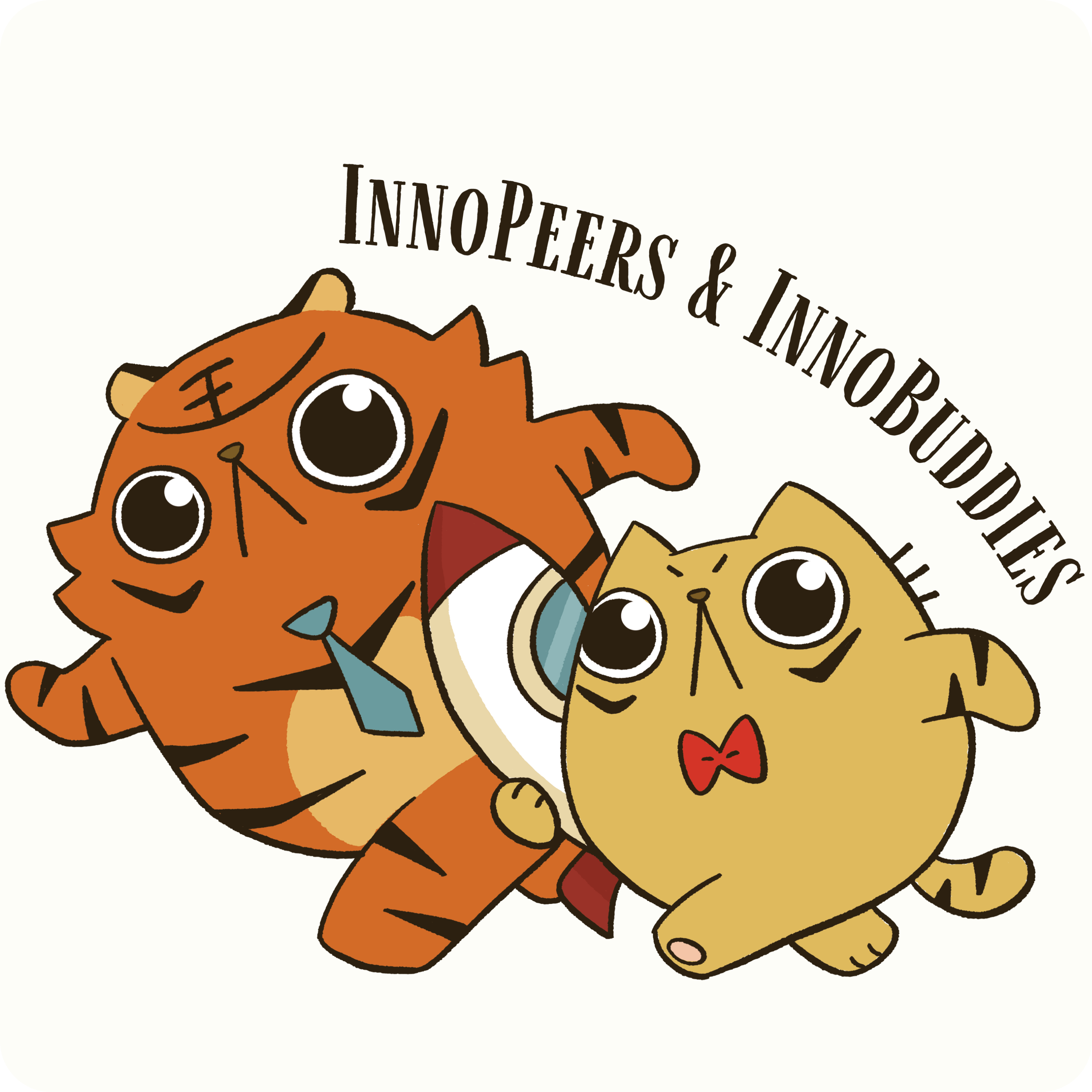“I was one of those girls who since very young yearns to be a marine scientist!” Apple is a coral specialist and research assistant professor at the School of Life Sciences in CUHK. In an outfit of the Coral Academy navy blue hoodie with “We Learn. We Love. We Conserve.” print and ripped jeans, the petite and sassy scientist has a youthful appeal that is no different from any other students on the University Mall. (Apple was wearing the same outfit as her team members for this group photo shooting.)
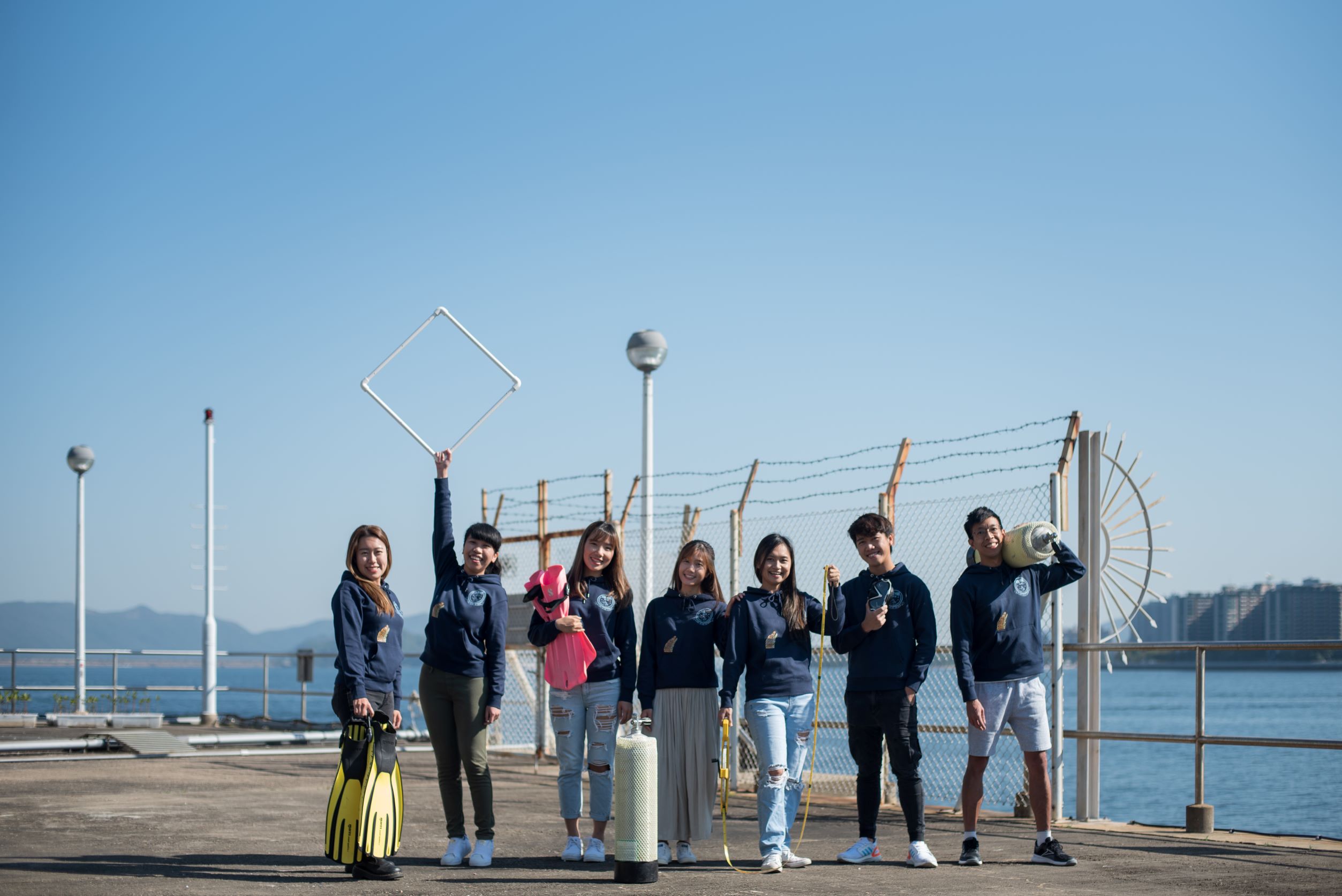
“I love to outreach. It won’t be us without these outreaching activities.” Coral Academy is an outreaching programme of the School of Life Sciences, CUHK established by Apple in 2018 to share knowledge and conservation of corals beyond Tolo Harbour to local communities. In its second year of collaboration with Agricultural, Fisheries and Conservation Department (AFCD), Coral Nursery Education Programme is the most well-known project of Coral Academy.
A school a tank — culturing corals and cognisance of the sea
Apple’s team brings corals of Hong Kong into 18 secondary schools, each with one coral tank. The team provides technical support and training to participating school teachers and students formed as “coral culturing squads” to take care of the corals together. “Each school group has to take care of the corals with weekly records of coral health conditions and water quality, biweekly change of water, and monthly coral growth reports. In addition, they will organise sharing sessions at school and in the community. A lot of effort and time are well-spent.”
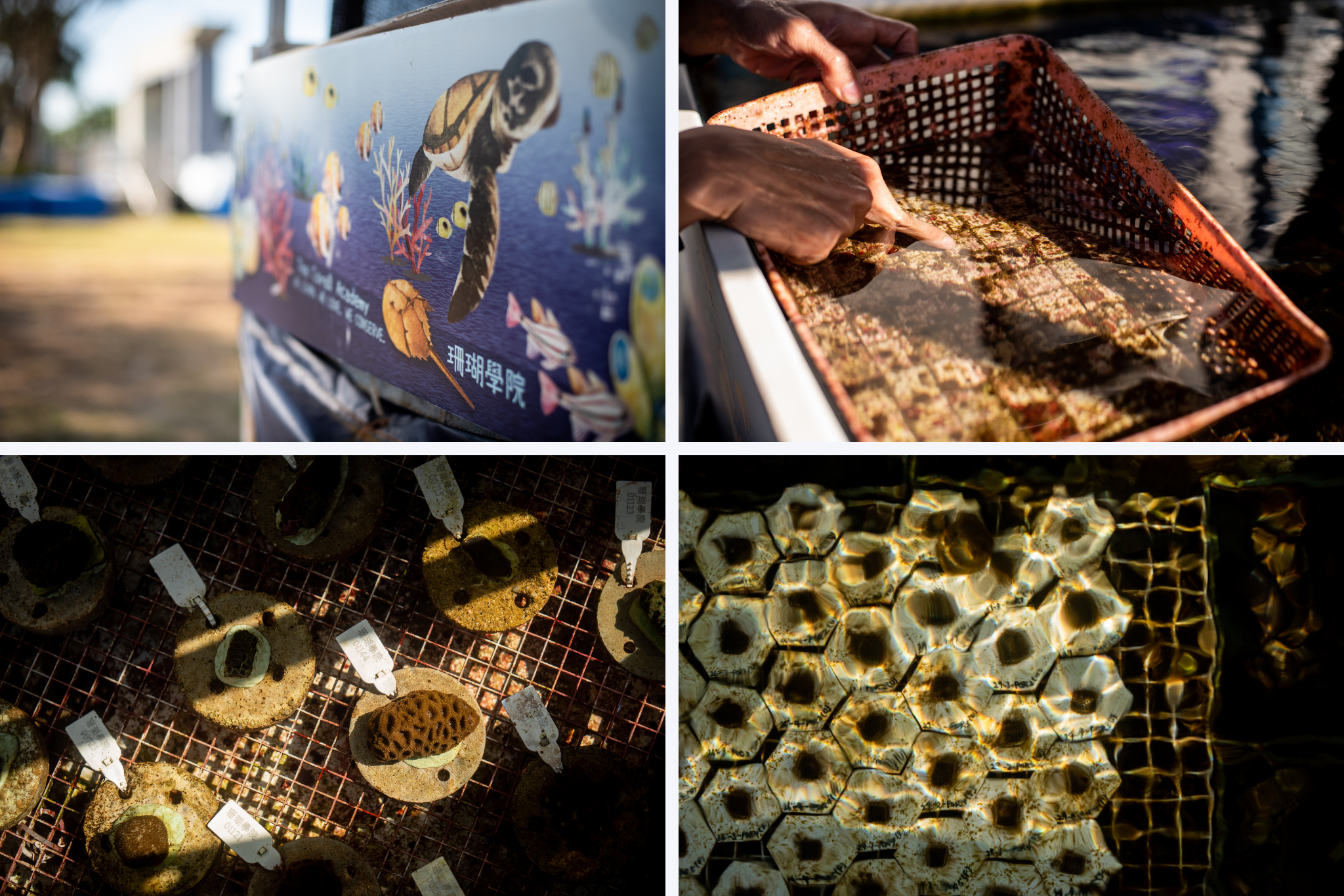
After growing at the foster schools for 8 months, these “greenhouse” corals will first return to Simon F. S. Li Marine Science Laboratory at CUHK and get to adapt to the natural sea environment. In summer, Apple and her team will sail out to Tolo Channel and dive to transplant the corals to the sea. The school groups who have meticulously taken care of the juvenile corals will stay on the boat to watch this glorious moment of restoration by live-streaming.
“What we want to achieve is the restoration of the ecosystem, such as increasing biodiversity and ecosystem services. It may take a decade or even decades for the effects to show as corals grow slowly. Our outplanted corals are growing very well — with over 90% of survival rate in the past 2 years. I hope they will thrive and reproduce in the wild. It’s easy to destroy but it takes tons of effort to restore. Instead of restoration, it’s more important to cherish our precious coral communities.” Apple stresses the gravity of addressing the root cause.
It was the closure of 26th United Nations Climate Change Conference (COP26) on the day of interview. Climate change, carbon reduction and so on are buzzwords in the city. Global warming is the main culprit of coral bleaching, and coral bleaching is one of Apple’s primary research interest. If these environmental problems persist, can Hong Kong’s coral survive? Are we able to culture more resilient or tolerant corals that can adapt to these climate challenges?
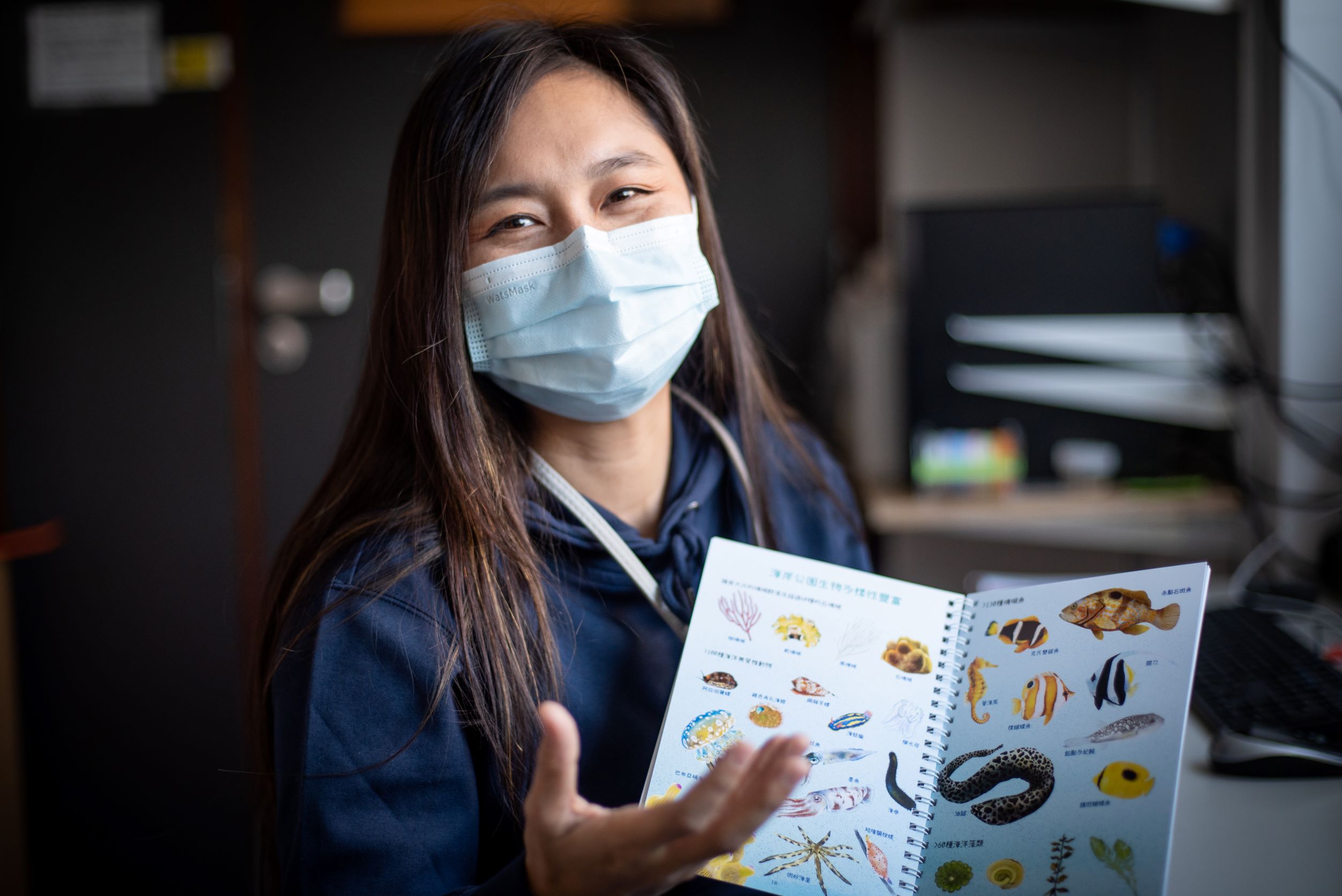
Are corals in Hong Kong particularly resilient?
“What’s so special about corals in Hong Kong? They are simply tough! In Hong Kong, water temperature can go down to 13°C in winter and up to 31°C in summer. It’s quite a feat to survive such temperature difference. Corals can adapt to environmental changes, but adaptation takes time. Climate change is just coming too fast. We want to explore if corals in Hong Kong are particularly resilient to temperature changes, and if so, what is the mechanism?”
While carrying out the mission of finding more resilient or tolerant coral species to cope with climate change, ecological conservation is pressing. Does Apple have any pointer?
“You cannot promote conservation by hard-sell. Over the years we have got familiar with the 3R principles of ‘Recycle, Reuse and Reduce’, yet those slogans have failed to bring any drastic changes. The image of a starving polar bear is gradually losing its spur as people get apathetic about it. Apathy is a dangerous sign.”
Knowledge. Attitude. Behaviour. Apple believes that knowledge is only the very first step to conservation. “First you need to know what the subject matter is all about. You will conserve only when you love. This is why I put forward student-centered experiential learning.”
Through experiential learning, students get to interact and connect with marine creatures. The bond compels students to believe that they can bring about positive impact and hence changes their attitude and behaviour.
Apple’s teaching philosophy, along with her affinity and enthusiasm in her sharing, has brought her multiple teaching awards. She makes use of one of the prizes to design a 360° VR video of the underwater world so that students can immerse in underwater wonders even in the classroom. “Students will see me diving and pulling out a measuring tape in the sea. They learn about underwater survey methods and analyse data as if they are in various healthy and damaged coral communities.”
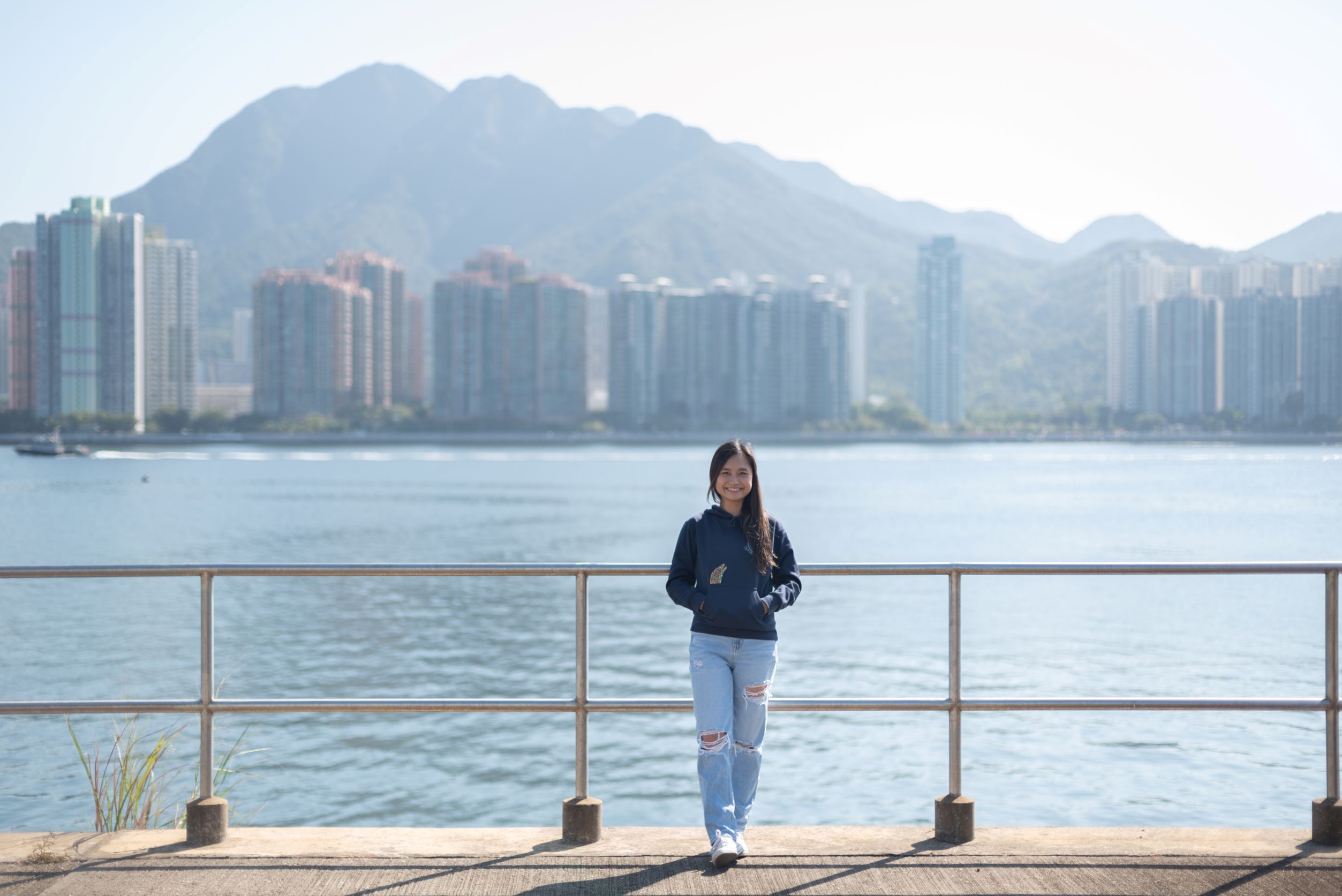
“I used to see fish as food…”
Growing up in Tai Po area meant lots of outdoor experience for Apple. “I lived in Cheung Shue Tan Village when I was little. I often saw snakes just off the threshold, and I ran around the hill all the time.” Apple loves to climb hills, but she loves the sea even more.
Apple’s father was from a fishing village in Pinghai of Guangdong, and settled at the seaside when he came to Hong Kong. Apple remembers going out to the sea as a family. “We had so many happy times fishing, snorkelling, and catching crabs, turban shells and abalones. I love the sea since I was little, and have always wanted to be a marine scientist!”
She reflects on her change of attitude towards the sea when she got her scuba diving certificate at Year 3 in university. “I used to see fish as food. But since I learnt to dive, I look forward to every encounter with marine creatures in order to observe their behaviour and take photo records.” Many of her photos are displayed on the webpage of Coral Academy.

Apple lives up to the motto of “Dream Big and Dare to Fail”. Once she sets her goal, her perseverance to achieving it is not to be underestimated.
“When I was in my first year studying biology (at HKUST), I knocked on the door of the marine laboratory to be a student helper.” She then applied for postgraduate study at CUHK on corals — the application was quite dramatic. “I wanted to research under a particular professor here, but I had not been able to contact him.”
What did she do when her first choice of supervisor was nowhere to be found? Well, all roads lead to Rome. She made appointments with other professors at CUHK anyways. “I had just met another professor that day. When I was leaving I told the student who saw me off that I was actually looking for Prof Ang Put O Jr. and asked if he was in office.”
Incidentally Prof Ang was on his way back to the laboratory, and that very helpful student waved down his car and introduced him to Apple. Apple later convinced Prof Ang to be her dissertation supervisor, and embarked on her MPhil and PhD journey here in CUHK.
“I just love it!”
Throughout the interview, Apple kept saying how much she love researching, sharing and outreaching. “I just love it! I was giving a lot of talks already in my postgraduate years.” Upon completing her PhD, there was a vacancy for lecturer at the School of Life Sciences. Always be prepared, Apple grasped the opportunity and officially joined CUHK.
Apple reveals no sure-fire pedagogy or strategy, “But I am grateful that the students like my classes. This is perhaps I have a lot of stories and fun facts about marine creatures to share, and arrange coral adoption for them. The students will have the chance to fix corals onto the bases in the sea by themselves, label the corals and write down all kinds of wishes for them. I was once very touched by a student who wrote me a thank-you card for discovering a new hobby after attending my summer course. Some students even take diving classes so that they can meet the corals they have adopted someday in the sea .”
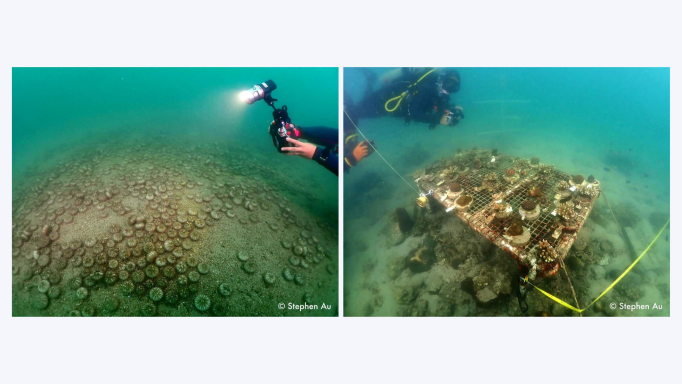
( Facebook page of Coral Academy)
Apple and her team has just concluded a programme for “citizen scientist” with the support from World Wide Fund for Nature (Hong Kong). The team recruited and trained a group including teachers and social workers, who dived with the team to collect and transplant coral fragments. They also conducted ecological surveys on coral communities together.
It sounds like a really attractive programme. How much do participants pay? “It’s free of charge! All our programmes are free. Hence quotas fill up fast.” (Clara and I, who promote entrepreneurship with ORKTS, reckon that a large number of interested parties will still sign up for this fun and meaningful programme even if it has a price tag.)
The booklet of the recently published Coral Nursery Education Programme is equally appealing. It is filled with brilliant photos and colourful illustrations of marine creatures, as well as interesting descriptions of Hong Kong’s underwater world, amazing local biodiversity, and all kinds of information about corals such as their appearances and ways of reproduction. “Kudos to our project coordinator-cum-designer who made all the illustrations!”
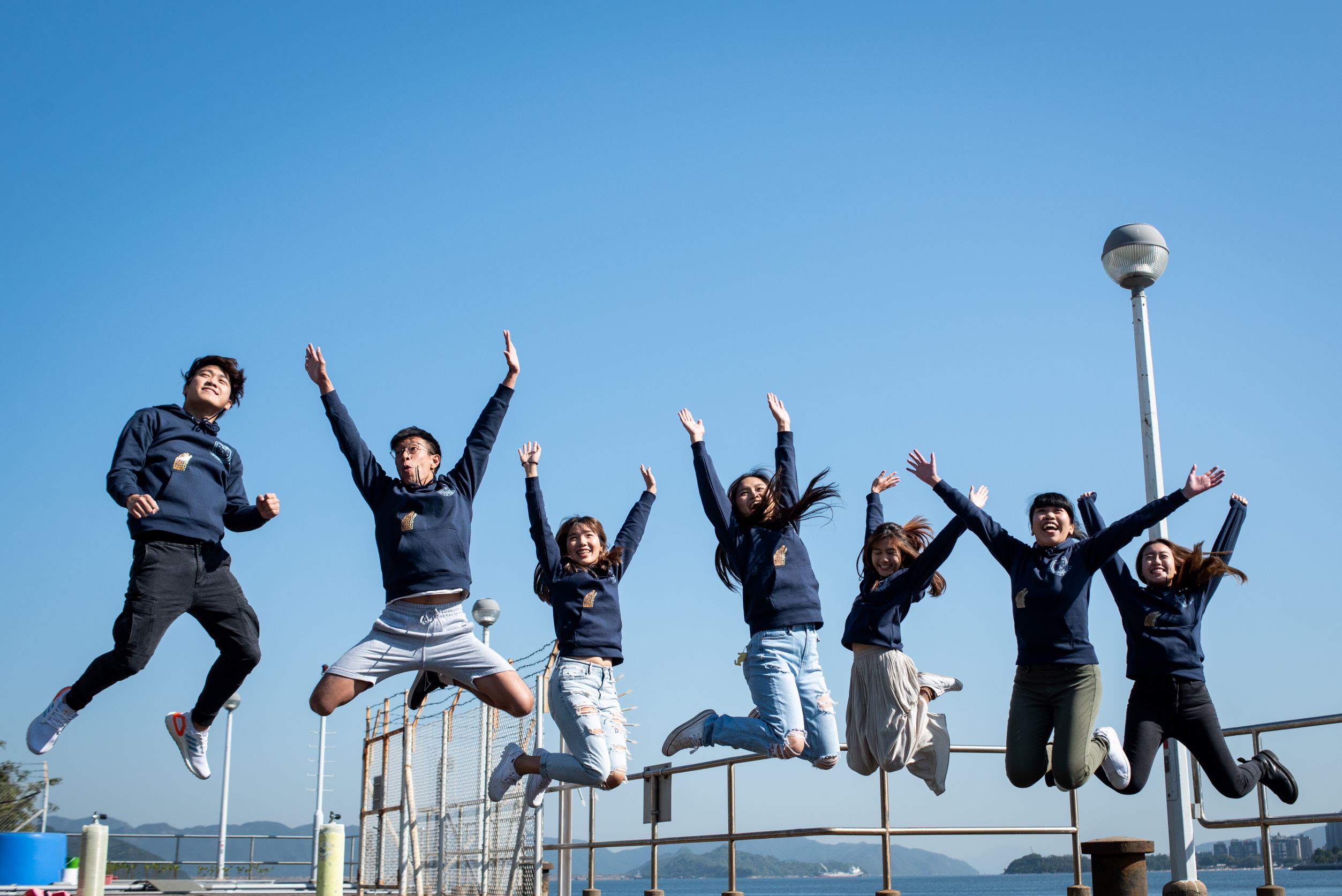
The successful outreaching programmes have helped to build a team of 5 assistants and a PhD student to work on coral research, restoration and public education together. “I have to let go a bit more.” Apart from research and teaching, Apple has now got more family responsibilities as the mother of a one-and-a-half-year-old daughter. “It is challenging to be an aspiring female scientist but I have no regrets about having children. I actually want to have one more child. I think a family is only complete with two kids.” Apple says pertinaciously.
“I’m pretty open-minded. If I really cannot fulfil my career ambitions I will gladly accept it, but mostly importantly I have tried hard.” Of course there is the support of her better half. “He said his life mission is to support me,” chuckles Apple.
【Scholarly keyword】Coral bleaching
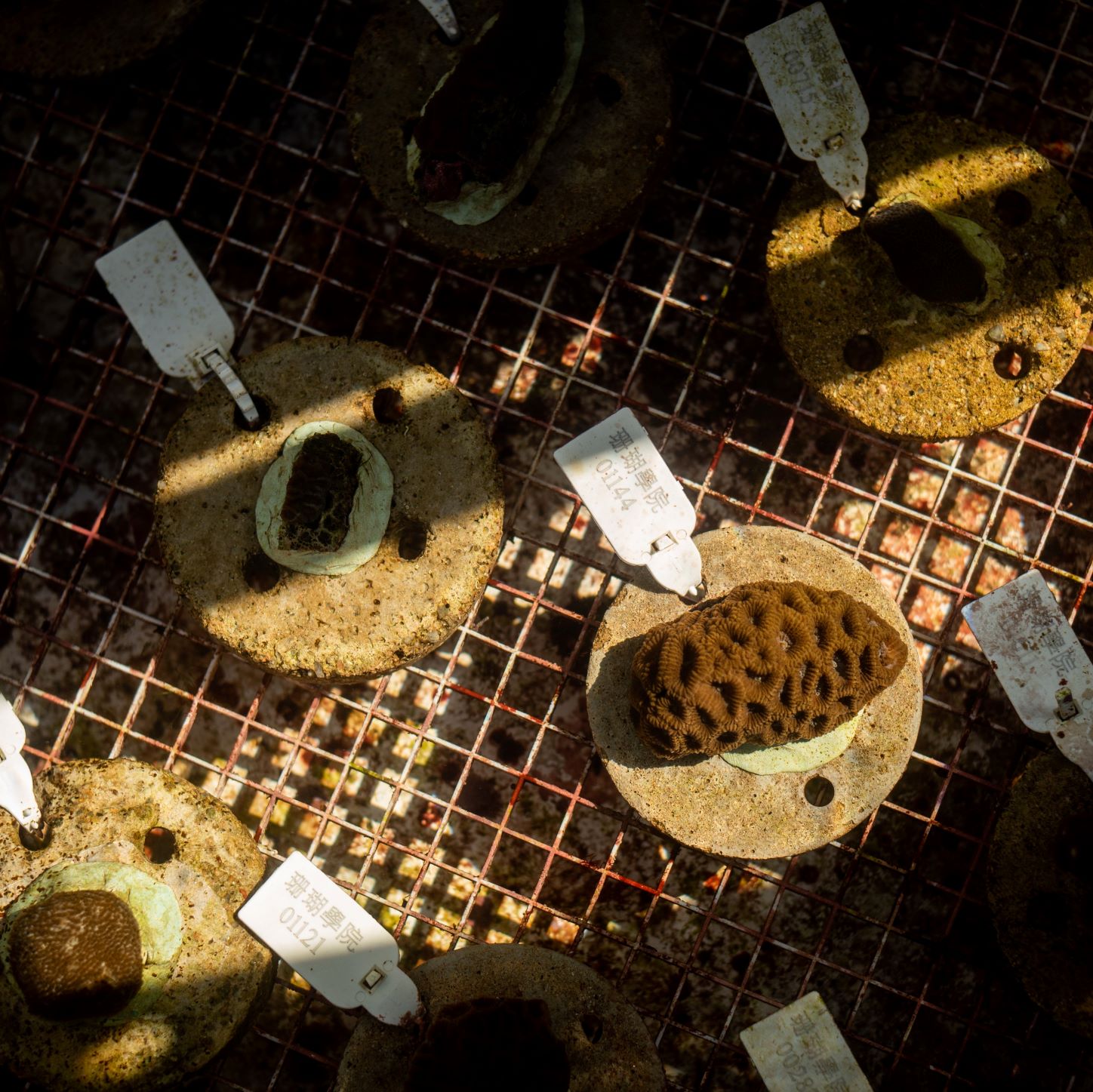
“Bleached corals are not dead,” says Apple. Corals get most of their bright colours from zooxanthellae, which live in a mutually beneficial relationship with coral polyps by producing food for corals. In the documentary Chasing Coral highly recommended by Apple, a scholar describes such mutualism this way, “They (corals) essentially have food factories living inside of themselves”. Corals expel the zooxanthellae that live inside them when sea temperature increases, leaving only the transparent coral polyps and white coral skeletons. This is called coral bleaching.
Apple emphasises that bleaching corals are losing most of their food sources, but if the environment improves soon enough for zooxanthellae to return, corals can recover from bleaching. If unfavourable conditions persist, however, corals may die or are more at risk of diseases.
Coral culturing facilities at Simon F. S. Li Marine Science Laboratory at CUHK. (ORKTS)
Original text in Chinese:Kary Wong@ORKTS
***
Not yet a subscriber? !Do it now!
Curated by InnoPort Team, one email to feed you the hottest info and story from the innovation universe — CUHK and beyond!
***
Where Ideas Root and Flourish


